3000Kと4000KのLED電球の迷子に陥っていませんか?この包括的なガイドに飛び込んで、あなたの家のための理想的な照明の選択にあなたを導くために調整された。
家庭用照明の領域をさらに深く掘り下げましょう。部屋によって役割は異なり、適切な照明はその目的を際立たせる。2025年までには、LED照明が世界の照明市場の76%を占めると予測されている。
Considering LED recessed downlights or spotlights? It's paramount to zero in on the color temperatures of your chosen LED bulbs.
For many, the 3000K vs. 4000K LED debate is a pressing one. However, we've juxtaposed these temperatures to dispel any uncertainties.
照明温度を理解する
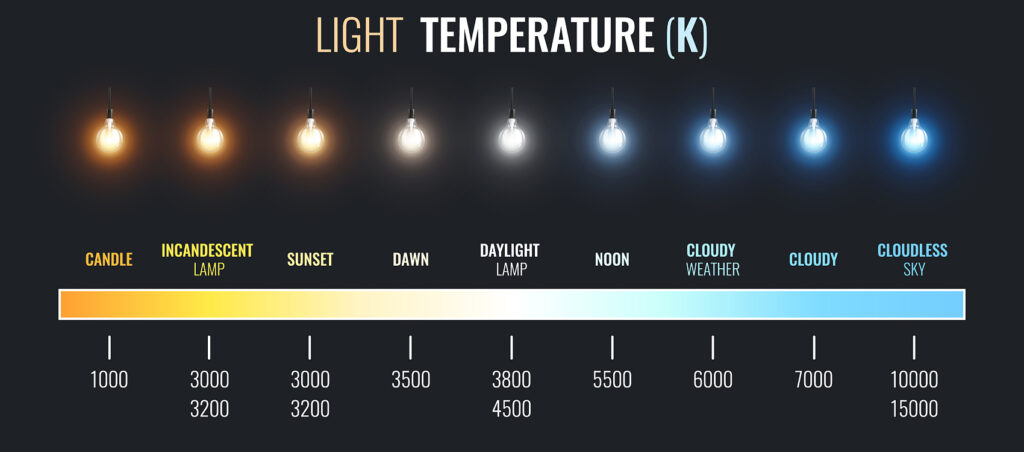
Before delving deeper, let's demystify lighting temperature. Essentially synonymous with color temperature, it refers to the hue emitted by a light bulb. For instance, an LED bulb might radiate a warm yellow glow at 2700K, or perhaps, mimic natural daylight at 5000K.
In layman's terms, imagine heating a metal to around 5,000 degrees, revealing a cool white hue. This suggests the LED bulb's color temperature hovers around 4000K.
Such values, like “4000K Led bulbs,” stem from the correlated color temperature. The Kelvin scale, pivotal in these discussions, extends up to 10000K. For clarity, here's a breakdown of prevalent color temperatures:
- 2700K - 暖かい白
- 3000K - ソフトホワイト
- 3500K - ニュートラルホワイト
- 4000K - クールホワイト
- 5000K - bright white
- 6500K - daylight

家庭用照明の議論の核心は、しばしば3000Kと4000KのLED電球をめぐって展開される。
3000Kの色温度
The 3000K LED bulbs exude a warm hue, leaning more towards yellow than white. While different temperatures yield varied colors, the distinction between 3000K and 4000K underscores the former's yellowish, warm glow.
興味深いことに、3000KのLED電球は、ペースは遅いものの、白色とシームレスに調和する。この温かみのあるイエローの照明は、家庭内で自然光の仕上がりを好むアイテムに最適です。
アースカラーを基調とした住宅では、3000Kが最有力候補に浮上する。この色温度は、住宅のインテリアにシームレスに溶け込む。ちなみに、多くのインテリア・デザイン愛好家は、白いキッチンにはこの暖色系の色合いを使わないようアドバイスしている。
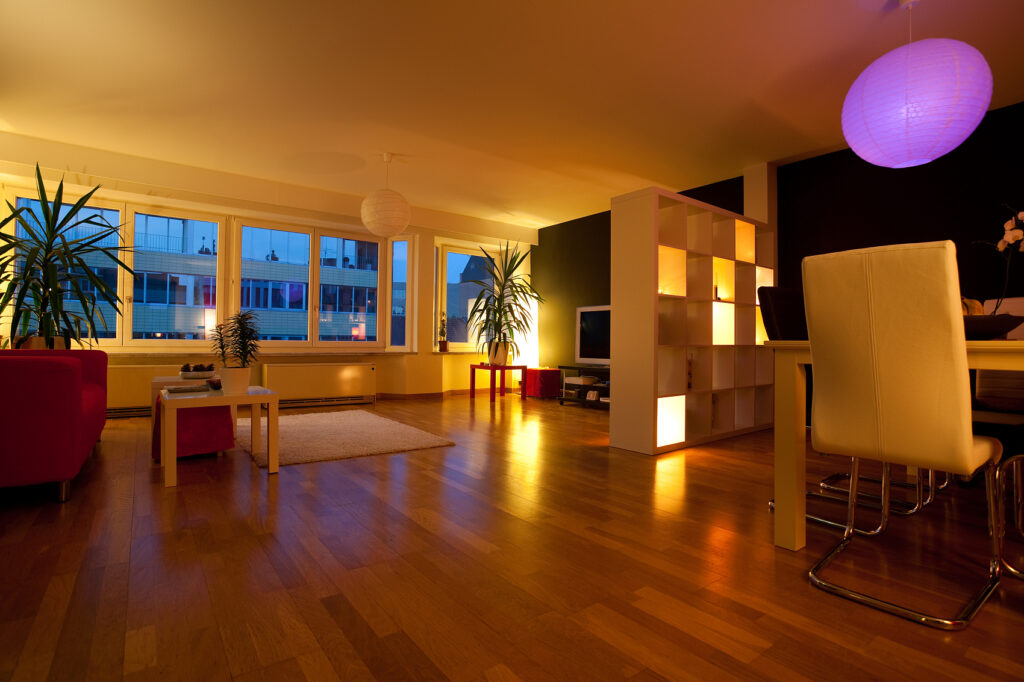
3000KのLED照明はクールかウォームか?
ケルビンスケールの白色側に位置する3000Kは、高温の電球よりも明らかに暖かく、より黄色です。その色合いと黄色のアンダートーンは、伝統的な白熱電球に酷似しており、3000KのLEDは、クラシックな雰囲気を求める人々に好まれています。
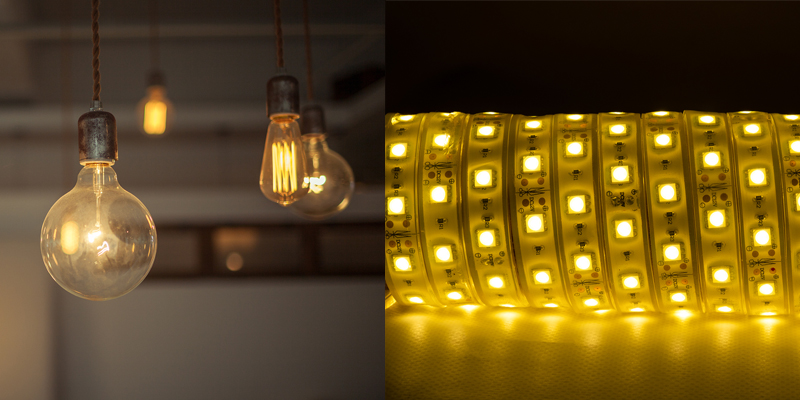
However, bulbs like the 2700K LED exude a more pronounced yellow, especially evident when using energy-efficient COB LED downlights. Such a temperature isn't ideal for task-oriented lighting.
開梱 4000K 色温度
3000K対4000Kの論争において、4000Kはクールな白を象徴している。柔らかな白のキッチンキャビネットなど、白いインテリアが自慢の家なら、4000Kは照明の聖杯かもしれない。
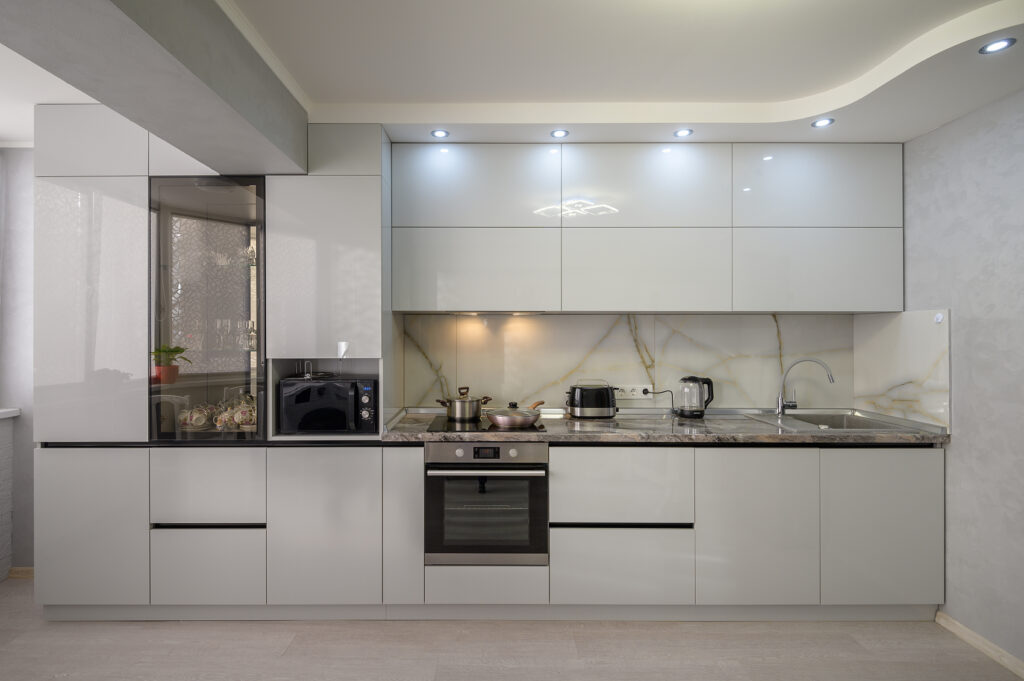
For instance, the 4000K bulb's cool white hue impeccably accentuates vibrant objects within your living space. This color temperature is versatile, fitting both residential and commercial settings.
重要なのは、白を基調としたインテリアを美しく引き立てることだが、木やアースカラーのパレットで飾られた家には響かないかもしれない。多くの場合、暖色系の黄色から暖色系の白色への移行に惹かれ、特に白い面の上では、よりクールな白い輝きを放つようになる。
4000KのLED照明は明るすぎる?
青と黄色の間を行き来する4000KのLEDライトは、調和の取れた照明に憧れる人々にとって好都合だ。4000Kと3000Kの間のバランスを取るために、多くの人が調光可能なLEDダウンライトを選択します。このような調光可能な照明器具は、ユーザーにLEDの色温度を調整する自律性を提供します。
While 4000K isn't blindingly bright and poses no blue light hazards, it's apt for spaces like living rooms, bathrooms, and kitchens, especially in homes with a refined aesthetic.
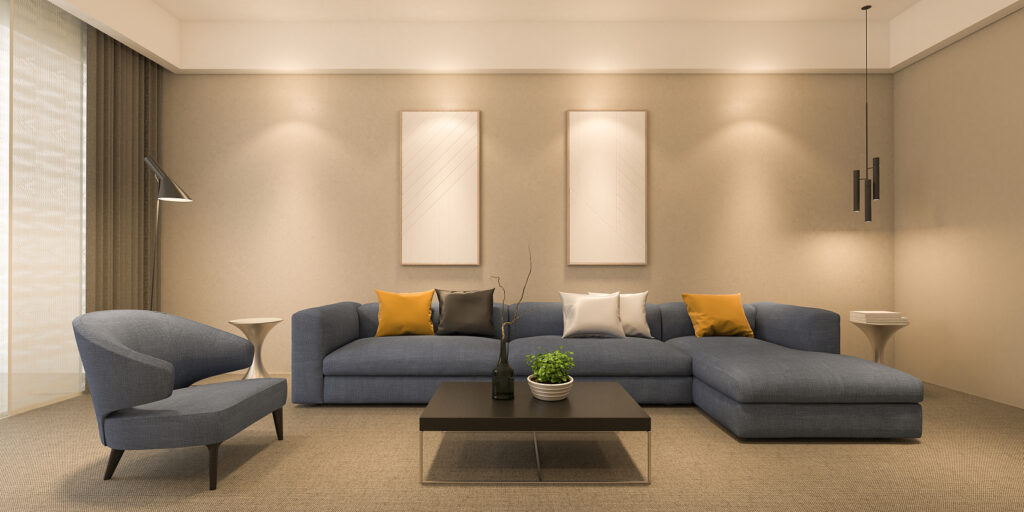
However, 4000K isn't universally preferred for homes or commercial spaces, as individual tastes differ. Aspiring interior decorators or enthusiasts would benefit from experimenting with diverse light fixtures and color temperatures to discern their ideal match. Contemporary homes often shine in warm or cool white lighting, while traditional homes bask in the glow of warmer, yellow-hued lights. The progression from 2700K to 3000K, culminating in 4000K, resonates with numerous homeowners.
3000k 対 4000k LED:比較考察
3000Kから4000Kへの移行を観察すると、温かみのある黄色から涼しげな白への楽しい変化を目の当たりにする。3000Kがウッド調の住宅に適しているのに対し、4000Kは商業用途に適している。
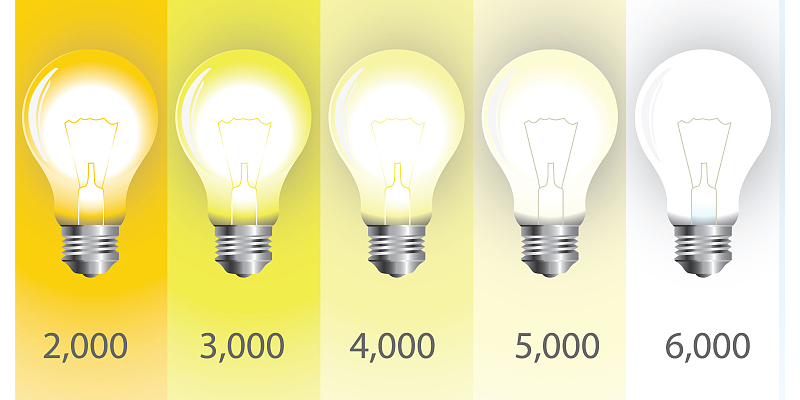
覚えておいてほしいのは、暖色系の白や黄色に傾いているライトは3000K以下になる。逆に、寒色系や明るめの照明は4000K以上です。3000Kと4000Kの間のスペクトルは、ニュートラルホワイトに代表されます。3000K、4000K、5000Kの内訳をご覧ください:
| 色温度。 | 5000K | 4000K | 3000K |
|---|---|---|---|
| アプリケーション | セキュリティ(屋外照明) | バスルーム、ガレージ、作業場 | ベッドルーム, リビングルーム |
| 外観 | デイライト | クール・ホワイト | ウォームホワイト |
| フィーリング | 爽快 | エナジャイジング | 慰め |

選択の指針:3000Kか4000Kか?
3000K対4000Kの議論の微妙なニュアンスをナビゲートすると、いくつかの要因があなたの決定を導く上で極めて重要であることが浮かび上がってくる。
まず、LEDはエネルギー効率の高さが際立ち、他の電球と同等の明るさを実現しながら、消費電力は少ない。
しかし、3000K対4000Kの対立では、個人的な好みと家庭の美学が優位に立つ。照明温度は様々な生理的反応を引き起こす。例えば、暖色系の白色照明は、メラトニンの分泌を調節し、リラックスを促し、安眠の呼び水となる。

夜間やリラックスタイムに温かみのある白色照明が好まれるのはこのためだ。対照的に、明るい照明はセロトニンの分泌を促し、活力を与え、集中力を研ぎ澄ます。
例えば、自然の太陽光が家中に降り注げば、活力が湧き、毎日の家事をはかどらせる。

1. 調光オプション:
Seeking to emulate the sun's radiant glow? Consider dimming options when selecting your home's lighting. Options abound, from bright white recessed lights to dimmable recessed lighting. Leveraging this tunable feature, your LED fixtures can oscillate between warm white, cool white, or bright white.
要するに、調光によって色温度を変化させ、空間の雰囲気を形作ることができるのです。LEDスポットライトやトラック照明など、照明の選択肢を絞る際には、それらがお客様のご要望に沿ったものであることを確認してください。一貫した色温度で十分な場合は、この検討をバイパスし、最適な照明を選択します。
2. ユーティリティ
3000Kと4000KのLEDの間を行き来する場合、実用性が最も重要です。異なる空間には、異なる照明が必要です。例えば、リビングルームで温かみのあるイエローの照明を点灯すると、瞬時に落ち着いた雰囲気になります。
逆に、4000Kホワイトライトは透明度が高く、キッチン、ガレージ、バスルームに理想的だ。精度が最優先される場合は、4000Kの白色光がトップランナーとして浮上する。しかし、より審美的なアピールを求めるのであれば、より低い色温度の方が適しているかもしれない。
For instance, while unwinding in your living room or home office, engrossed in a book, the warm white light not only relaxes but also aids melatonin release. Given that 4000K LED's white light can disrupt the sleep cycle by impacting melatonin and other sleep hormones, 3000K is the go-to for relaxation.
興味深いことに、3000KのLEDが放つ温かみのある光は、微細なひび割れやシミといった小さな欠点を巧みに隠してくれる。
3. 健康
Health considerations are paramount. Just as prolonged sun-gazing harms your eyes, ill-advised household lighting choices can have repercussions. It's crucial to be cognizant of potential blue light damage from exceedingly bright white lights.
明るすぎる照明は目に負担をかけ、将来的に目の健康問題を引き起こす可能性があります。白熱電球はエネルギー効率が悪い一方で、ホームオフィスやその他の空間には適さないまぶしさを放ちます。
低い温度は住宅用照明に適しており、商業用にはより明るい白色光が必要な場合がある。4000KのLED電球から発せられる青い光を長時間浴びると、目に負担がかかる。そのため、特に寝室には3000Kの光の魅力が強調される。
4. アプリケーション
Here's a snapshot of residential and commercial applications, segmented by color temperatures and lighting needs:
- タスク照明:鋭利な焦点を必要とする場合、4000KのLED照明が最適。
- 公共事業:家事やガレージの作業には、4000KのLED照明が輝きます。
- アンビエント照明: This versatile option can embrace any color temperature, harmonizing with the room's mood and aesthetics.
- ベッドサイドランプ:夜間の熱心な読書家には、リラックスできる3000Kが理想的。
- 屋外照明:セキュリティなど多様なニーズに対応するため、4000K、あるいはそれ以上の青色光で満たされたLEDが適している。
- アクセント照明:作品にスポットライトを当てるには、4000Kのアクセントライトが最適。
5. 暖かい光/暖かい白色/自然光の気分を変える力
色温度は気分を調整する力を持つ。暖色系の黄色い光に包まれた部屋は、メラトニンのような睡眠ホルモンを刺激し、リラックスして眠りやすくなる。これにより、眠りにつくのを早めることができる。
逆に、涼しげな青い光に支配された部屋は、人を活性化させる。これはセロトニンの分泌によるもので、気分とエネルギーレベルを上昇させる。

In spaces demanding heightened alertness, be it for work or discussions, 4000K's white and cool light is ideal. However, for relaxation and aesthetics, softer hues like 3000K LEDs or even lower are recommended.
キッチンの難問:3000Kか4000Kか?
If your kitchen showcases white cabinetry or surfaces, cooler color temperatures like 4000K LED lights might be apt. Elevated light temperatures, spanning 4000K to 5500K, can complement your home's aesthetics and decor.
インテリア・デザインの専門家の多くは、特別に伝統的なデザインでない限り、キッチンに3000Kの照明を使わないよう注意を促している。

明るさ論争:5000kは3000kより明るいか?
5000Kは、明るさの点で、3000Kの温白色光を凌駕することは間違いありません。色スペクトルの高い方に位置する5000Kの照明は、建設やメンテナンスなど、細心の注意と正確さが要求される作業でしばしば選択され、最適な鮮明さを確保します。
However, with 5000K LED lights, the risk of eye strain escalates due to their intense luminosity. Mirroring broad daylight, they're apt for expansive outdoor venues, parking lots, and industrial lighting setups. The blue light from a 5000K LED can render a room colder than its ambient temperature.

結論
Selecting the right lighting can accentuate your home's interior decor, significantly influencing the comfort you experience. While 4000K is unparalleled for focus and alertness, 3000K is the epitome of relaxation and convenience.
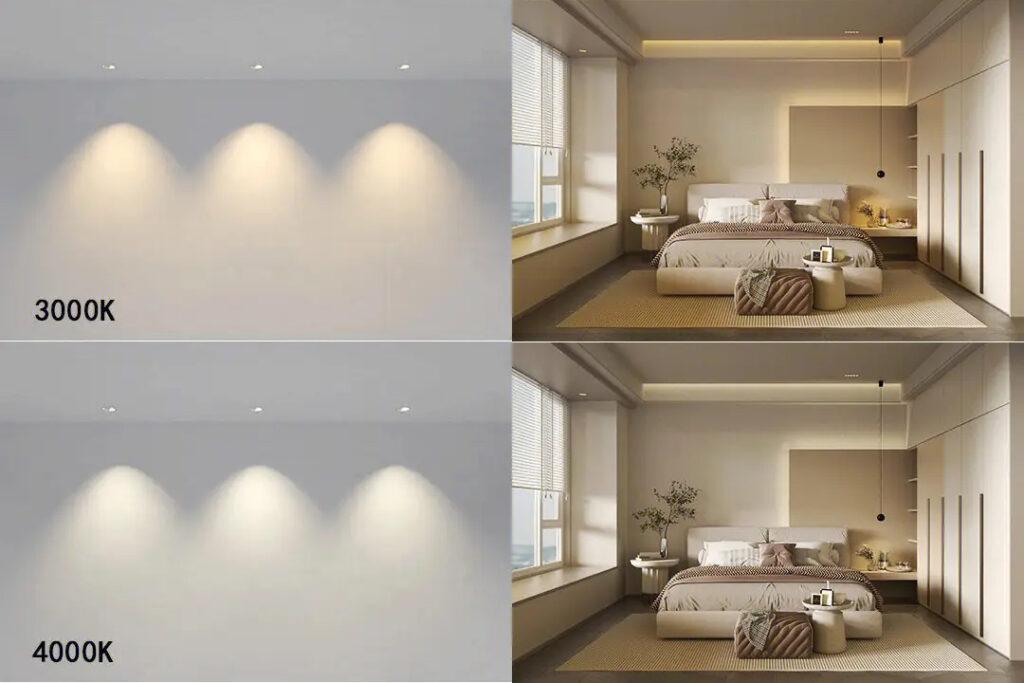
In this guide, we've elucidated:
- 3000Kと4000Kのライトを区別するニュアンス
- 3000Kと4000Kライトの意義
- 3000Kおよび4000K照明の無数のアプリケーション
- 住まいに最適な照明を選ぶためのガイド
boqi LEDドライバーで空間を照らす
さて、一般的な色温度に関する見識を身につけたところで、完璧な家庭用照明を選ぶのは旅であることを忘れてはならない。希望の調光可能な照明を実現するには、評判の良いLEDドライバーメーカーと提携することが重要です。 TRIAC LEDドライバー, 0-10V LEDドライバ, DALI LEDドライバー と LED調光器, ライティングコントローラなどなど。
中国に製造拠点を持つ当社は、お客様独自のニーズに対応しています。お客様のLED照明に関するご要望をお聞かせください。






